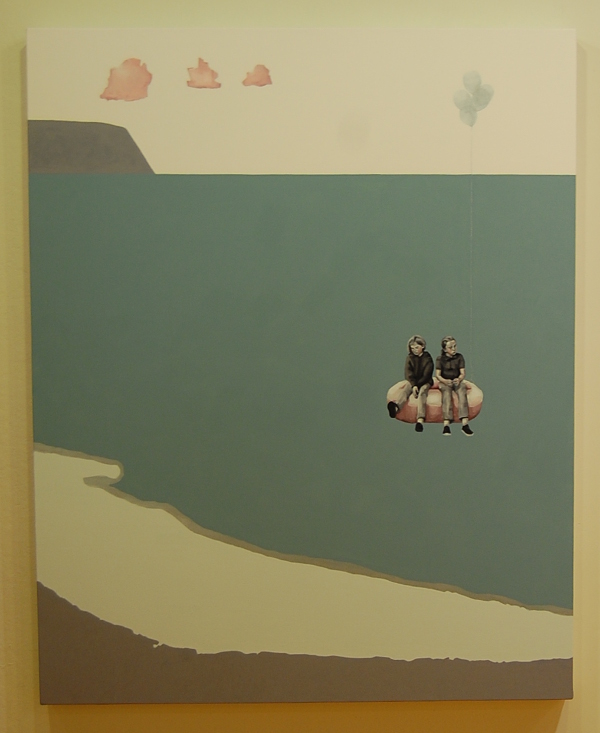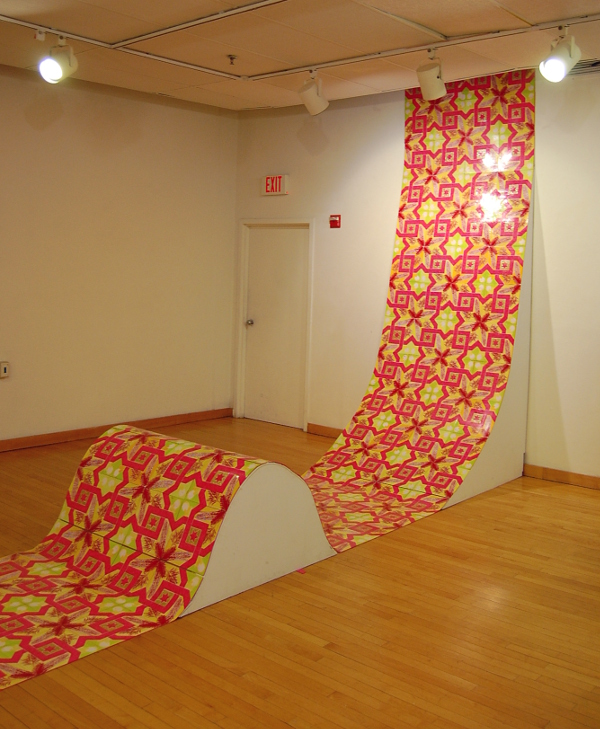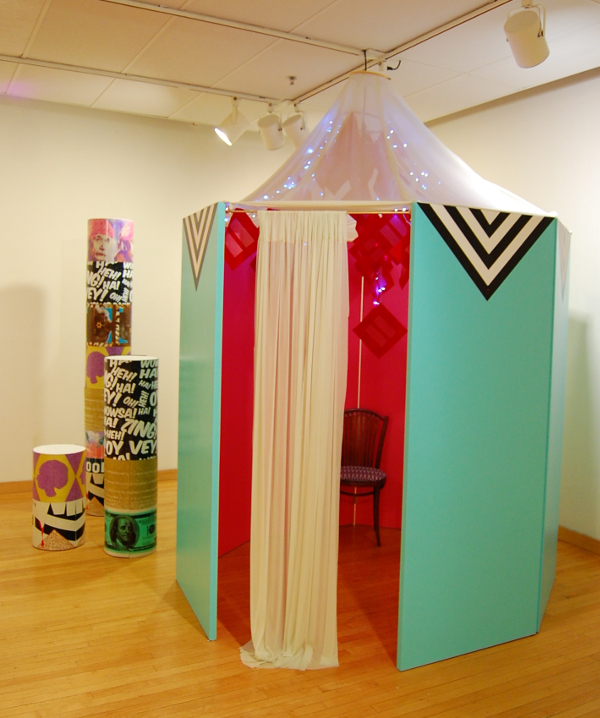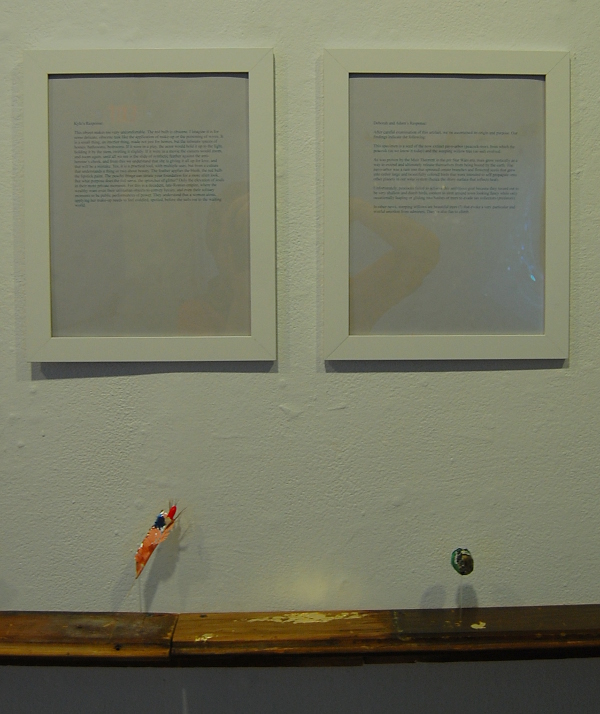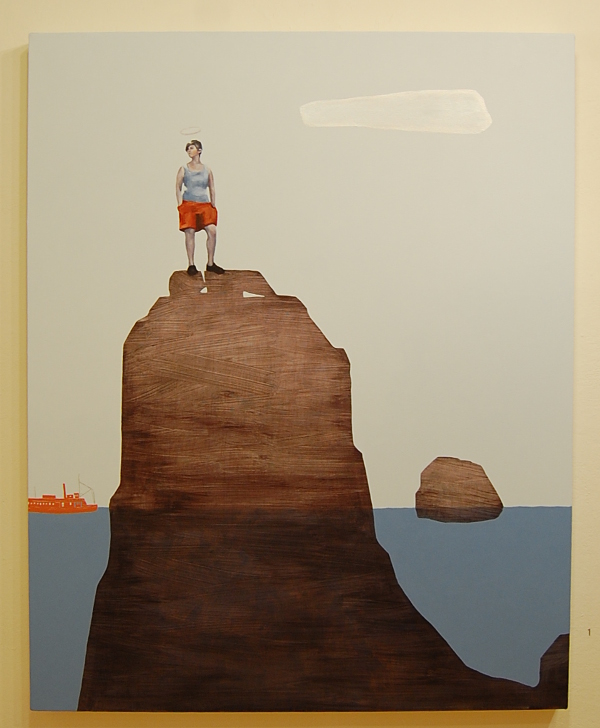
Three interpret place and location for Fleisher Wind Challenge
With a smattering of printmaking, painting and installations, Fleisher Art Memorial is in the midst of their third Wind Challenge event of the past year. Each Wind Challenge event by this Knight Arts grantee highlights three emerging artists, this year from a pool of 239 applicants, with the goal of advancing their careers and exposure in the region. The group this time around consists of Maggie Mills, Leslie Friedman and Katie Parry.
Paintings by Maggie Mills evoke a strong sense of freedom, individuality and a strong sense of childlike wonder. Their settings are mostly very open and sparse, landing the focus of each work solely on the individual(s) more so than the landscapes. Like the Romantic painters of the 19th century, Mills confronts her tiny characters with the immensity of nature where they are rendered as mere observers, contemplative and quiet in their demeanor.
Maggie Mills, “Reconstruction.”
Many of the hues Mills utilizes are cool and subdued, lending a certain stony, sculpted appearance to the faces of her figures. Unlike her artistic forebears in Romanticism, the artist here is reacting to the decline of industry and nature as opposed to the dawn of the Industrial Revolution. Her paintings are far more abstract and illustrative than the more realistic likenesses of some 200 years prior, although the feeling of rugged determination is still very present in the statuesque poses and expressions of her subjects, who seem simultaneously innocent and weary.
Leslie Friedman, “Sukkot Ramp.”
Leslie Friedman fills a huge portion of the gallery space with large, structural installations, which are interestingly as much a product of printmaking as they are modular assembly. Her sensibilities are strongly informed by the strategies of Pop Art, full of bright colors, repetition, text and recognizable images of celebrities (in this case a scientific one: Albert Einstein). Although Friedman in many ways seeks to oversaturate, the pieces are quite entertaining, encouraging viewers to walk over, around, and even enter them.
Leslie Friedman, pieces from “Stereo Pillars” and Shtetl.”
The lengthiest individual work is a sort of skateboard ramp covered in colorful patterned tiles entitled “Sukkot Ramp.” Elsewhere a tent with lights and interior seating area called “Shtetl” provides rest amidst the other more active pieces. Through images of the Star of David, Einstein, and printed phrases like “Oy Vey!” it should be clear that Friedman is very interested with Jewish culture and politics – in fact, she describes herself as a student of both art and political science. Her titles invoke Jewish holidays and the Eastern European towns where Yiddish speaking Jews thrived prior to the Holocaust, so while the exhibit appears to be all fun and games, there are graver examinations of identity hiding just below the surface as well.
Kaytie Parry, “Artifacts” and “Responses.”
Katie Parry explores both installation art and imaginary worlds, acting as a sort of bridge between the other two artists in the show. With an affinity for set design, Parry set out to create artifacts which she sent to eleven different people. These individuals replied to her with their impressions of the world their artifact came from. Each of the resulting descriptions is posted behind the sometimes strangely familiar objects, and Parry also assembled drawings to accompany each artifact/description. All of these concepts will help the artist create future set designs based on the dialogues.
Kaytie Parry, an individual slide from “Worlds.”
Nearby, Parry creates a netlike plastic seascape beneath a little skyline complete with a Ferris wheel and coastline. One imagines the video of dancer Andy Braddock on the beach playing through part of the netting is taking place on this very shore…
All three artists play with notions of place and location, twisting and distorting our perceptions of both real and imaginary areas. Each brings a completely unique background to the table, offering their experiences and knowledge as a fresh way to perceive our surroundings. Wind Challenge 3 will be on display at Fleisher through May 10.
Fleisher Art Memorial is located at 719 Catharine St., Philadelphia; [email protected]; fleisher.org.
Recent Content
-
Artsarticle ·
-
Artsarticle ·
-
Artsarticle ·
